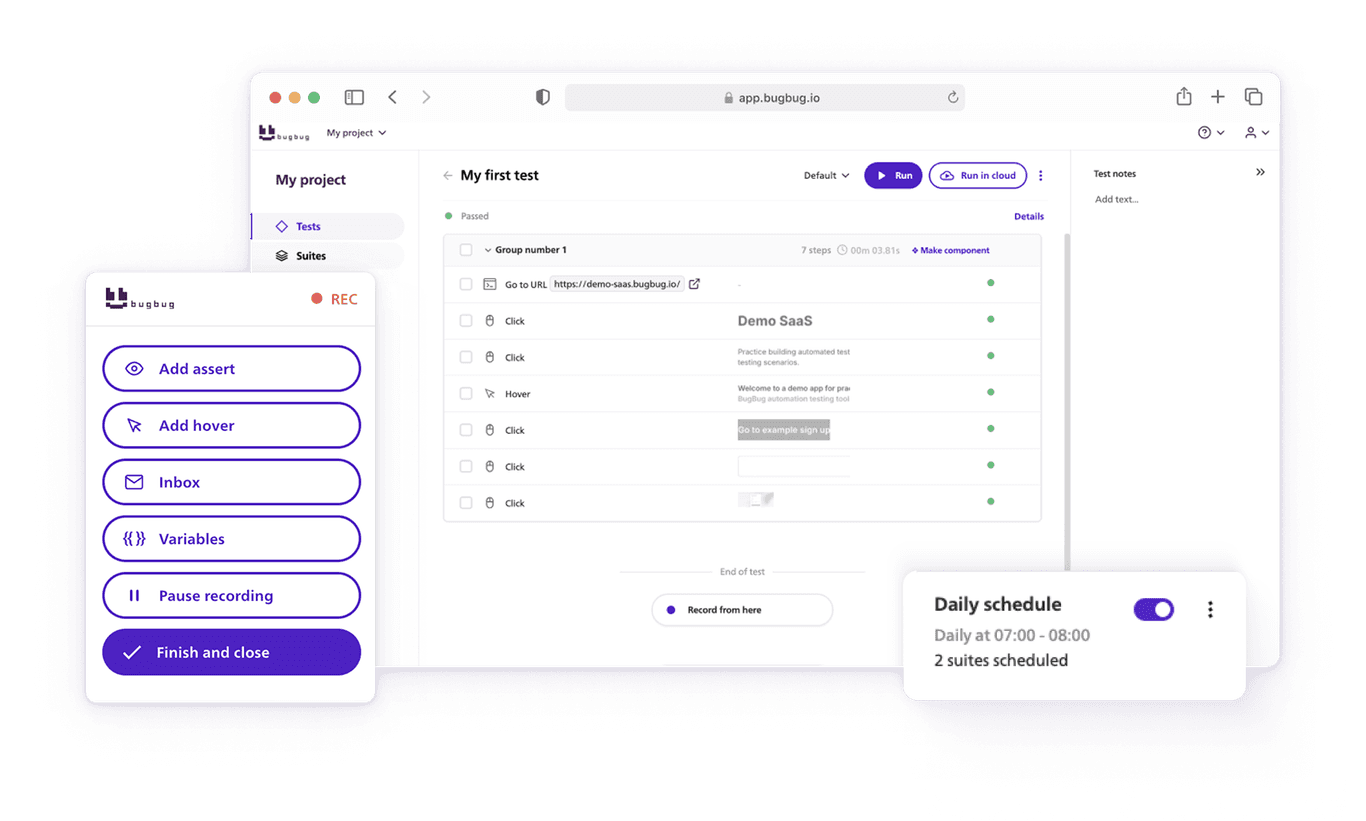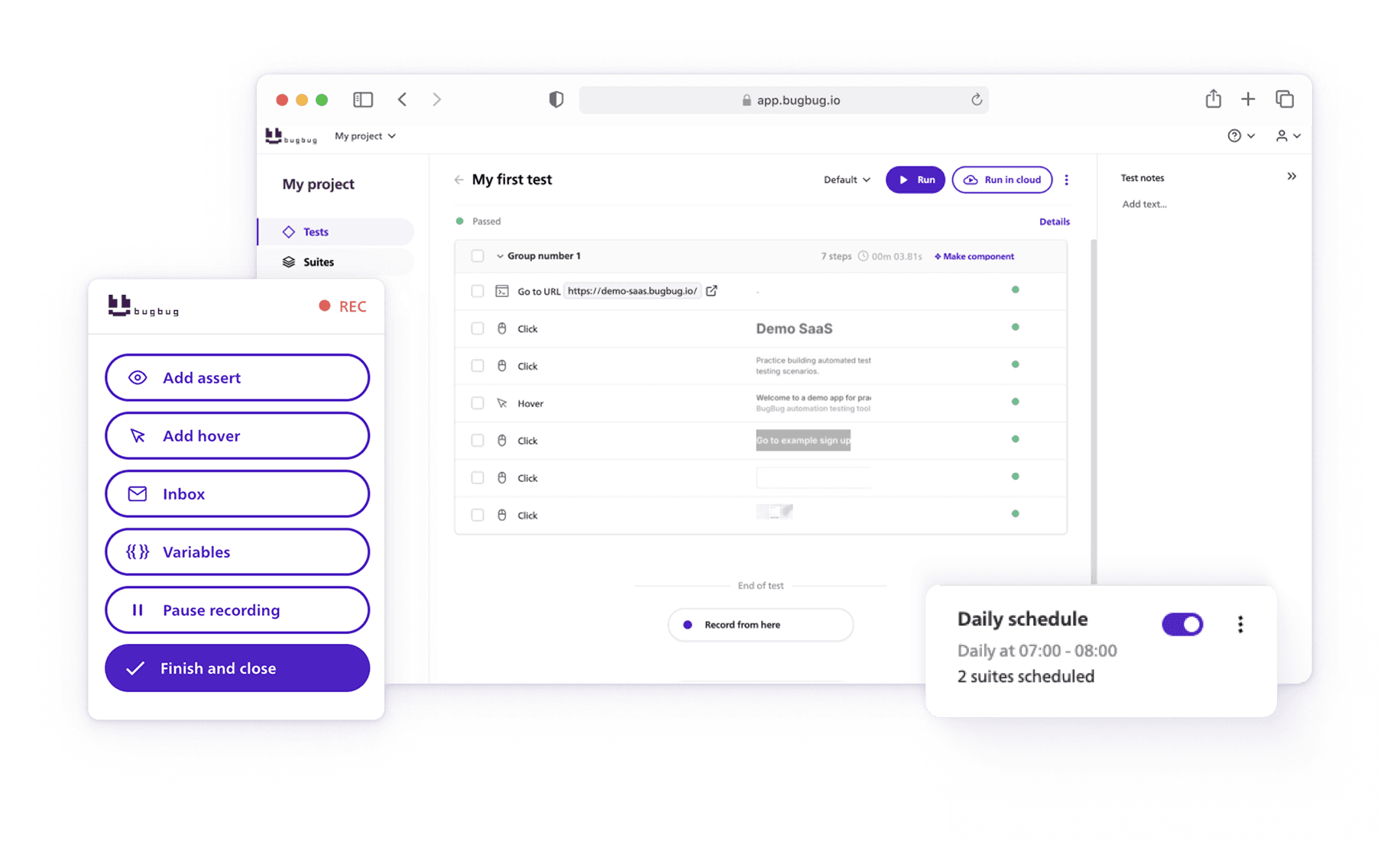- 🎯 TL;DR - Smoke Testing
- What Is Smoke Testing?
- Why Is It Called “Smoke” Testing?
- Real-World Scenarios: How Smoke Testing Plays Out
- What’s Included in a Typical Smoke Test?
- Smoke Testing vs. Full Regression Testing
- Who Performs Smoke Testing?
- Can You Automate Smoke Testing?
- Final Thoughts: Don’t Skip the Basics
- FAQ: Smoke Testing
You just deployed a new feature. It passed all the unit tests. The dev team is confident. But wait—before you pop the champagne, have you done a smoke test?
Smoke testing might sound like something you do in hardware labs or car garages. But in software, it’s your first line of defense against nasty surprises after a new build or release.
Let’s break it down.
🎯 TL;DR - Smoke Testing
- Smoke testing = quick health check — it verifies that the app’s most essential features (like login, navigation, and page loads) work after a build or deployment.
- Origin of the term — borrowed from hardware testing, where engineers checked if a new device “smoked”; in software, it means catching critical failures before deeper QA.
- Real-world use cases — smoke tests act as the first gate for new feature releases, hotfix deployments, and continuous integration pipelines.
- Key difference from regression testing — smoke tests are fast and shallow, while regression tests are thorough and time-consuming.
- Automation with BugBug — teams can record and rerun smoke tests in seconds, making it easy for startups and SaaS teams to catch blockers early and ship with confidence.
💡 Check our guide on smoke testing with BugBug
What Is Smoke Testing?
Smoke testing is a quick, shallow check to make sure the basic functions of your app still work after a new deployment.
Think of it like flipping the light switches in a new house. You’re not testing the entire electrical system—just making sure the lights turn on.
In software, it’s the same idea. After a new build, you run a set of essential tests to confirm:
- The app launches
- The login page loads
- Key buttons respond
- Navigation still works
- You don’t get blank screens or crashes
If any of these basic things fail, there's no point in testing deeper. You send it back to the dev team for a fix.
There are several types of smoke testing that teams can use depending on the stage of the software development life cycle, such as build verification, acceptance smoke testing, and UI smoke testing. By conducting smoke tests as part of your preliminary testing strategy, you ensure that each build is functional enough for further QA. This approach helps establish a foundation for reliable smoke testing, saving time and catching major issues early in the process.
Why Is It Called “Smoke” Testing?
It comes from hardware testing. Back in the day, engineers would plug in a new piece of hardware and check if it _smoked_—literally. If it didn’t catch fire, you could move on to deeper testing.
Software teams borrowed the term. Today, it’s a fast sanity check that says, “We’re good to proceed.”
Real-World Scenarios: How Smoke Testing Plays Out
Smoke testing isn’t just a checkbox. It’s a strategic part of your software development lifecycle, helping you catch major issues early—before further testing wastes time or breaks confidence.
Let’s look at three real-world situations where smoke testing plays a critical role in the software testing process.
New Feature Release: Preventing Critical Issues from Reaching Production
Scenario: Your SaaS platform just added a new “Team Analytics” dashboard. It’s a major release with new charts, filters, and visual elements.
Smoke testing serves as the first gate after the feature is deployed to staging. A quick UI smoke testing process verifies that:
- The dashboard loads properly
- Charts render without errors
- Navigation between tabs works
- No 500 errors appear in the console
This initial smoke test confirms the build is stable enough to proceed. If the smoke test passes, you continue with detailed testing, like integration testing, load testing, and eventually acceptance testing.
But if even one smoke test fails—say, the page doesn’t load at all—you stop the process. No need to continue into more in-depth testing if the basic functionality is broken.
In this case, smoke tests focus on critical functionalities and fundamental user interface elements. This early failure protects the QA team from wasting hours on a broken build and helps development teams fix the issue quickly.
Start smoke testing with BugBug
Test easier than ever with BugBug test recorder. Faster than coding. Free forever.
Get started
Hotfix Deployment: Verifying Stability After a Bug Fix
Scenario: Your team rushes out a bug fix to resolve a payment issue in the checkout flow. The fix is merged and deployed.
You don’t have time for comprehensive testing, but you conduct a smoke test suite covering:
- Login flow
- Product selection
- Checkout and payment confirmation
- Order history page
This is classic build verification testing. Also known as confidence testing, it ensures the software build is intact and previous existing features weren’t accidentally broken by the patch.
In this case, you can perform manual smoke testing or use automated tools like BugBug to rerun your saved smoke test cases. These quick checks make sure the hotfix didn’t break the software quality or impact other parts of the app.
Advantages of smoke testing here? Faster release cycles, reduced risk, and a clear decision: either the smoke testing cycle continues into regression tests, or the software testing professionals send the build back for another fix.
Continuous Integration: Catching Bugs Early in the Dev Process
Scenario: Your startup follows a continuous integration model. Every time code is merged into the main branch, a new software build is created and deployed to staging automatically.
At this stage, a lightweight automated smoke testing suite runs. It verifies:
- App loads without errors
- Authentication works
- Key user journeys like “create project” and “invite teammate” are functional
- APIs respond correctly
These smoke test cases are part of your larger test suite, but they run first—early in the development and integration testing stage. This helps catch blockers and major issues immediately after each deployment.
Think of this as part of a hybrid testing strategy—automating the repetitive checks while leaving room for occasional manual testing when needed.
If smoke tests verify that the system is working, the pipeline continues with sanity testing, acceptance smoke testing, and in-depth verification testing. If something breaks, the pipeline halts and alerts the development team before the issue hits production.
By updating smoke tests regularly, your team ensures they reflect new key features and use cases. It keeps your smoke testing process reliable and valuable as your app evolves.
What’s Included in a Typical Smoke Test?
It varies by app, but here are common things to include:
- Can users log in and log out?
- Do the main menus and links work?
- Can you create or view a basic record (e.g., a task, user, post)?
- Do key pages load without errors?
- Are APIs responding with valid data?
You’re not digging deep here. You're not validating edge cases. You're just making sure the app isn’t obviously broken.
Need a codeless smoke testing tool?
Try BugBug – it’s built for SaaS teams who want quick feedback after every release.
Smoke Testing vs. Full Regression Testing
A common mix-up: smoke testing isn’t the same as regression testing.
Smoke test: Fast, broad, shallow
Regression test: Thorough, deep, time-consuming
You might run a smoke test in 5–10 minutes after each deploy. Regression tests might take hours and cover dozens (or hundreds) of scenarios.
Think of smoke testing as the gatekeeper. If it fails, you stop and fix. If it passes, you continue with deeper testing or release to users.
Who Performs Smoke Testing?
It depends on your team setup.
- In a small startup: Often it’s the QA engineer—or even the product manager—running it manually.
- In a mature SaaS team: It’s usually automated and triggered after every CI/CD deployment.
- No QA team? You can still write a basic checklist and run it after each release.
Even a non-technical teammate can smoke test a SaaS app with a bit of training and a simple test plan.
Can You Automate Smoke Testing?
Absolutely. And you should.
With tools like BugBug, you can record and run smoke tests in the browser with no coding required. Just click through your key flows—login, create user, navigate dashboard—and save them as a reusable test.
Every time you deploy, BugBug can rerun that test in seconds. If something breaks, you get a heads-up before users do.
For lean SaaS teams, this is gold. It lets you ship faster without flying blind.
Final Thoughts: Don’t Skip the Basics
Smoke testing is a fast, cost-effective way to protect your team from pushing broken builds through the software development process. Whether it’s a brand-new feature, a rushed hotfix, or a daily CI pipeline, smoke testing requires minimal effort but delivers maximum clarity.
And remember: the goal isn’t to test everything. It’s to test just enough to decide if the build is stable enough to proceed.
If you're running manual smoke testing now, look into automated tests for scalability. A good smoke test suite pays off by saving time, reducing risk, and giving your team the confidence to ship faster.
Smoke testing isn’t fancy. It doesn’t catch every bug. But it saves you from the embarrassment of deploying something that doesn’t even load.
In fast-moving teams, it’s your safety net.
So the next time you hit “Deploy,” take a breath. Run a smoke test. It could save you hours of debugging and a whole lot of awkward Slack messages.
Happy (automated) testing!



